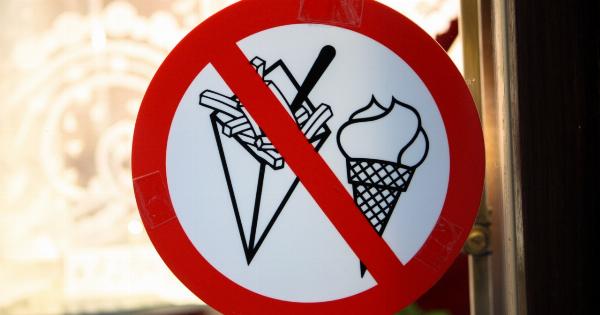When it comes to our health, there is a growing concern about the accumulation of dangerous belly and heart fat. While numerous factors contribute to this issue, our diet plays a significant role in converting certain foods into these harmful fats.
In this article, we will explore the science behind how certain foods can be transformed into belly and heart fat and the impact it has on our overall health.
The Role of Calories
Calories are the basic unit of energy provided by the food we consume. Consuming an excess of calories, particularly from certain food sources, can lead to weight gain and the accumulation of belly and heart fat.
However, not all calories are created equal, and the source of these calories also matters.
Refined Carbohydrates and Sugars
Refined carbohydrates and sugars are notorious for their ability to contribute to the formation of dangerous belly and heart fat.
These foods, such as white bread, rice, pasta, and sugary snacks, are quickly broken down by our digestive system, causing a rapid increase in blood sugar levels.
The Insulin Connection
When we consume refined carbohydrates and sugars, our body releases insulin to help regulate our blood sugar levels. However, excessive insulin release can promote fat storage, particularly in the abdominal area.
This is known as visceral fat and is associated with an increased risk of heart disease, diabetes, and other chronic conditions.
Saturated and Trans Fats
Saturated and trans fats are found in many processed and fried foods, such as fast food, pastries, and fatty cuts of meat. These fats are difficult for our bodies to break down, leading to the accumulation of belly and heart fat over time.
Additionally, consuming a diet high in saturated and trans fats can raise our bad cholesterol levels, further increasing the risk of heart disease.
The Role of Alcohol
Excessive alcohol consumption can also contribute to the conversion of calories into dangerous belly and heart fat. Alcohol is high in empty calories and is quickly converted into sugar by our bodies.
Moreover, excessive alcohol intake impairs our liver’s ability to break down fats efficiently, resulting in the buildup of visceral fat.
The Impact of Processed Foods
Processed foods, typically high in refined carbohydrates, unhealthy fats, and added sugars, can significantly contribute to the accumulation of belly and heart fat.
These foods are often packed with calories and lack important nutrients, leading to overconsumption and weight gain.
High-Fructose Corn Syrup
High-fructose corn syrup (HFCS), a common sweetener found in many processed foods and beverages, has been linked to the development of dangerous belly and heart fat.
HFCS is metabolized differently than other sugars, and excessive consumption has been linked to increased belly fat, insulin resistance, and other metabolic disorders.
The Importance of a Balanced Diet
While certain foods can convert into dangerous belly and heart fat, it is essential to note that a balanced diet plays a vital role in maintaining overall health and preventing fat accumulation.
Incorporating a variety of fruits, vegetables, whole grains, lean proteins, and healthy fats can provide essential nutrients while reducing the risk of developing excess fat.
The Role of Exercise
In addition to a balanced diet, regular exercise is crucial for managing weight and reducing the risk of dangerous belly and heart fat.
Physical activity helps burn calories, build muscle, and improve overall cardiovascular health, thereby reducing the likelihood of fat accumulation.
Genetic and Individual Factors
It is important to recognize that genetic and individual factors can influence how our bodies metabolize and store fat.
While diet and exercise play a significant role, some individuals may be more prone to developing belly and heart fat due to their genetic makeup.
Conclusion
Understanding how certain foods can convert into dangerous belly and heart fat allows us to make informed decisions about our dietary choices.
By reducing the consumption of refined carbohydrates, sugars, saturated fats, trans fats, and processed foods, while incorporating a balanced diet and regular exercise, we can minimize the risk of developing excess fat and promote a healthier lifestyle.































